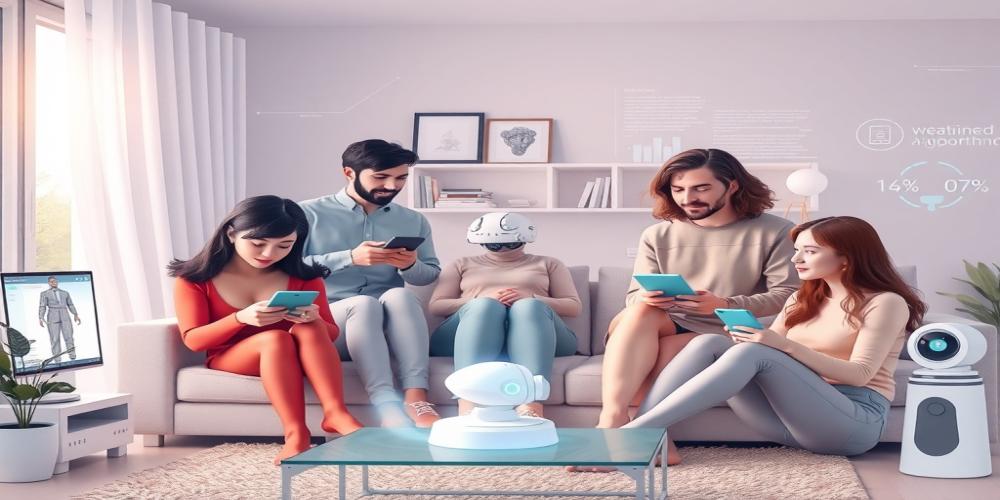Gender Bias in AI Issues and Home Assistant Solutions
Introduction to Gender Bias in AI
As artificial intelligence becomes increasingly integrated into our daily lives, concerns about bias in these systems have grown exponentially. Among the various forms of bias, gender bias stands out as a particularly pervasive issue that affects how AI systems perceive, interact with, and make decisions about different genders. This article explores the nature of gender bias in AI, its implications, and how Home Assistant is addressing these challenges to create more inclusive technology.
Understanding Gender Bias in AI Systems
Gender bias in AI occurs when algorithms make unfair or stereotypical assumptions based on gender. These biases can manifest in various ways, from voice assistants with female-sounding default voices to facial recognition systems that perform better on male faces than female faces. The root of these biases often lies in the data used to train AI systems and the perspectives of the developers creating them.
Common manifestations of gender bias in AI include:
- Voice assistants with female-sounding voices by default
- Gendered language in AI responses
- Stereotypical associations in content recommendations
- Unequal performance across genders in facial recognition
- Bias in hiring or recruitment algorithms
The Impact of Gender Bias
The consequences of gender bias in AI systems extend beyond mere inconvenience. When AI systems perpetuate stereotypes or show bias, they can reinforce existing societal inequalities. For example, AI-powered recruitment tools that favor male candidates can perpetuate gender disparities in the workplace. Similarly, voice assistants designed primarily for female voices can normalize the idea that women should be in service-oriented roles.
These biases not only affect how technology interacts with users but also shape user behavior and expectations over time. As we become more reliant on AI systems, the amplification of these biases can have profound societal implications.
Home Assistant's Approach to Addressing Gender Bias
Home Assistant, as a leading open-source home automation platform, has recognized the importance of addressing gender bias in its systems. The development community has implemented several strategies to create more inclusive interactions:
1. Gender-Neutral Voice Options
Home Assistant supports multiple voice options, allowing users to select voices that align with their preferences rather than defaulting to stereotypically female voices. This approach challenges the norm of associating assistant roles with femininity.
2. Inclusive Language in Responses
The platform has worked to eliminate gendered language in system responses, opting for more inclusive phrasing that doesn't assume user gender or reinforce traditional gender roles. This includes using gender-neutral terms and avoiding stereotypes in everyday interactions.
3. Diverse Training Data
By actively seeking diverse datasets for training voice recognition and natural language processing capabilities, Home Assistant aims to reduce bias in how the system understands and responds to different users. This includes incorporating voices and language patterns from various gender identities and cultural backgrounds.
4. Community-Driven Development
As an open-source platform, Home benefits from a diverse global community of contributors. This diversity in perspectives helps identify and address potential biases that might be overlooked in more homogeneous development teams.
Best Practices for Reducing Gender Bias in AI
While Home Assistant is making strides in addressing gender bias, there are additional best practices that AI developers and users can consider:
For Developers:
- Conduct regular bias audits of AI systems
- Involve diverse teams in the development process
- Use inclusive language in documentation and code comments
- Test systems with diverse user groups
- Implement transparency about how algorithms make decisions
For Users:
- Be aware of gender biases in AI systems you use
- Provide feedback when you encounter biased interactions
- Advocate for inclusive design in technology products
- Support organizations working to reduce bias in AI
Looking Ahead: Creating Inclusive AI
Addressing gender bias in AI is not a one-time fix but an ongoing process. As Home Assistant and other platforms continue to evolve, there is growing recognition that inclusivity must be built into the foundation of AI systems rather than as an afterthought.
By acknowledging the existence of gender bias, understanding its sources, and implementing proactive solutions, we can work toward AI systems that serve all users equitably. The efforts of platforms like Home Assistant demonstrate a commitment to this vision, but much work remains to ensure that the AI of the future is truly inclusive for all genders and identities.
Conclusion
Gender bias in AI is a complex issue with far-reaching implications, but it is not insurmountable. Through conscious design practices, diverse development teams, and ongoing commitment to inclusivity, we can create AI systems that respect and serve all users regardless of gender. Home Assistant's approach offers a model for how existing platforms can evolve to address these challenges while maintaining functionality and user experience.










